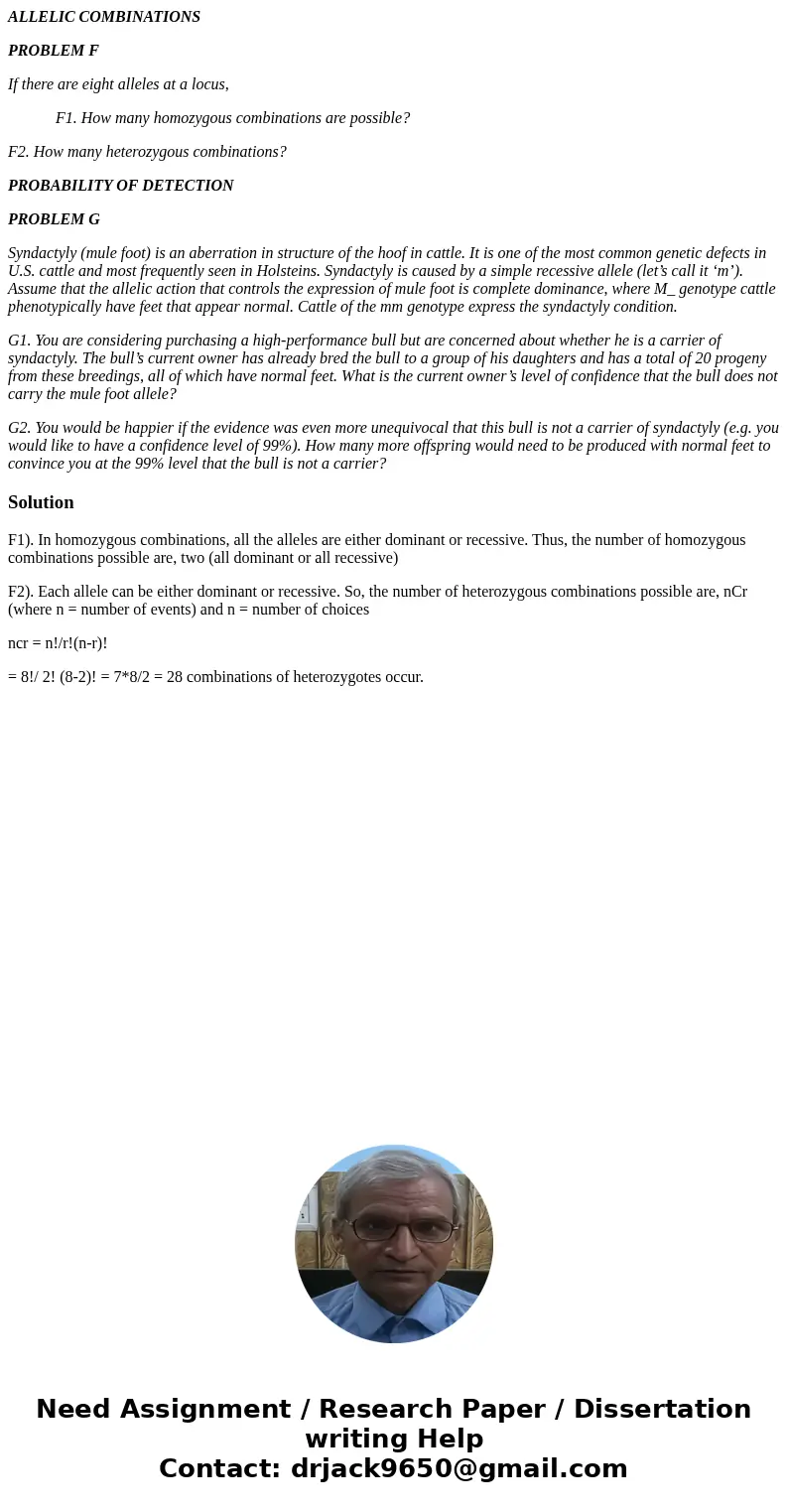ALLELIC COMBINATIONS PROBLEM F If there are eight alleles at
ALLELIC COMBINATIONS
PROBLEM F
If there are eight alleles at a locus,
F1. How many homozygous combinations are possible?
F2. How many heterozygous combinations?
PROBABILITY OF DETECTION
PROBLEM G
Syndactyly (mule foot) is an aberration in structure of the hoof in cattle. It is one of the most common genetic defects in U.S. cattle and most frequently seen in Holsteins. Syndactyly is caused by a simple recessive allele (let’s call it ‘m’). Assume that the allelic action that controls the expression of mule foot is complete dominance, where M_ genotype cattle phenotypically have feet that appear normal. Cattle of the mm genotype express the syndactyly condition.
G1. You are considering purchasing a high-performance bull but are concerned about whether he is a carrier of syndactyly. The bull’s current owner has already bred the bull to a group of his daughters and has a total of 20 progeny from these breedings, all of which have normal feet. What is the current owner’s level of confidence that the bull does not carry the mule foot allele?
G2. You would be happier if the evidence was even more unequivocal that this bull is not a carrier of syndactyly (e.g. you would like to have a confidence level of 99%). How many more offspring would need to be produced with normal feet to convince you at the 99% level that the bull is not a carrier?
Solution
F1). In homozygous combinations, all the alleles are either dominant or recessive. Thus, the number of homozygous combinations possible are, two (all dominant or all recessive)
F2). Each allele can be either dominant or recessive. So, the number of heterozygous combinations possible are, nCr (where n = number of events) and n = number of choices
ncr = n!/r!(n-r)!
= 8!/ 2! (8-2)! = 7*8/2 = 28 combinations of heterozygotes occur.

 Homework Sourse
Homework Sourse